Chloronix Eye Ointment

MRP ₹68
(Inclusive of all Taxes)
₹10.2 Cashback (15%)
Chloronix Eye Ointment is used to treat bacterial eye infections and eye inflammation that affect areas like the eyelids, conjunctiva (inner eyelid lining), cornea (clear front part of the eye), and the front section of the eye. It contains chloramphenicol, an antibiotic that stops the growth of a wide range of bacteria, and hydrocortisone, a corticosteroid that helps reduce redness, swelling, and discomfort. This combination works by treating both the infection and the inflammation. Common side effects may include irritation, burning, blurred vision, or swelling of the eyelids. Before using it, let your doctor know if you are allergic to any ingredients, are pregnant or breastfeeding, or are taking other medications.
Know Your Delivery Time
Provide Delivery Location

Secure Payment

India's Most Trusted Pharmacy

Genuine Products
Composition :
Manufacturer/Marketer :
Consume Type :
Return Policy :
Expires on or after :
About Chloronix Eye Ointment
Chloronix Eye Ointment is used to treat bacterial infections and eye inflammation. Bacterial eye infection occurs when harmful bacteria enter any part of the eyeball or surrounding tissues, including the cornea (front surface of the eye) and the lining of the outer eye and inner eyelids (conjunctiva). The common symptoms of eye infections are red eyes, pain, discharge, watery eyes, dry eyes, light Sensitivity, swollen eyes, itching, and blurred vision.
Chloronix Eye Ointment is a combination of two antibiotics: Hydrocortisone and Chloramphenicol. Hydrocortisone is a steroid medication that works by calming the body's immune response, thereby decreasing itching, pain, and swelling (inflammation) in the eye. Chloramphenicol is bacteriostatic, which prevents bacteria's growth by inhibiting the production of essential proteins necessary for bacteria to grow, multiply, and increase in numbers. Together, as a combined product, Chloronix Eye Ointment prevents the spread of eye infections caused by a wide range of gram-negative bacteria that cause eye infections.
Use Chloronix Eye Ointment as prescribed by your doctor. Chloronix Eye Ointment is only for use in the eyes. Do not swallow or inject Chloronix Eye Ointment. You are advised to use Chloronix Eye Ointment for as long as your doctor has prescribed it for you based on your medical condition. In some cases, you may experience redness, itching, irritation, burning/stinging sensations in the eyes, blurred vision, Sensitivity to light, eyelid swelling, itching, or crusting. Most of these side effects of Chloronix Eye Ointment do not require medical attention and typically resolve on their own over time. However, if the side effects worsen or persist, please consult your doctor.
Please tell your doctor if you are allergic to Chloronix Eye Ointment or any other medicines. Chloronix Eye Ointment should be used with caution in children. You are advised to consult a doctor if you are pregnant or breastfeeding. You are recommended not to use contact lenses during Chloronix Eye Ointment as it may worsen the infection. If you get any new eye problem, an eye infection, or notice any allergic reactions such as itching or redness of the eye and a skin rash, please consult your doctor immediately. You are advised to maintain a 10-minute time gap between using Chloronix Eye Ointment and other eye drops. Please do not touch the container tip to your eye, eyelids, or surrounding areas, as this may contaminate the solution and cause eye infections.
Uses of Chloronix Eye Ointment
Chloronix Eye Ointment is used in the treatment of bacterial eye infections. Its specific uses include the following:
- Conjunctivitis: Chloronix Eye Ointment is used to treat bacterial infection and inflammation of the conjunctiva. It helps reduce symptoms like eye redness, irritation, and discharge.
- Bacterial Keratitis: Chloronix Eye Ointment is used to treat infection and inflammation of the cornea. It helps relieve eye pain and prevent potential vision loss caused by corneal damage.
- Belpharitis: Chloronix Eye Ointment is used to reduce inflammation of the eyelids.
- Post-surgical Eye Inflammation: Chloronix Eye Ointment is used to prevent infections and reduce inflammation and swelling following eye surgeries.

Have a query?
Directions for Use
- Chloronix Eye Ointment is for ophthalmic (for eye) use only.
- Follow your doctor's instructions on the dosage and timing of this medication to ensure safe and effective use.
- Wash your hands thoroughly before and after using this medicine.
- Lie down and tilt your head backwards. Gently pull your lower eyelid with your index finger to form a pocket. Place the prescribed amount of Chloronix Eye Ointment into the pocket. Close your eyes for 1-2 minutes.
- Replace the outer cap after use.
- Avoid touching the container tip to your eye, eyelids, or surrounding areas to prevent contamination.
Medicinal Benefits
Chloronix Eye Ointment is a combination medication used to treat bacterial eye infections. It contains Hydrocortisone and Chloramphenicol. Hydrocortisone is a steroid medication that works by calming the body's immune response, thereby decreasing itching, pain, and swelling (inflammation) in the eye. Chloramphenicol is bacteriostatic, which prevents bacteria's growth by inhibiting the production of essential proteins necessary for bacteria to grow, multiply, and increase in numbers. Together, Chloronix Eye Ointment prevents the spread of eye infections caused by a wide range of gram-negative bacteria causing eye infections.
How Chloronix Eye Ointment Works
Storage
What if I have taken an overdose of Chloronix Eye Ointment
Drug Warnings
Chloronix Eye Ointment should not be used for an eye infection due to a virus, or another type of eye infection (e.g., tuberculosis, fungus), without consulting with the doctor. After applying Chloronix Eye Ointment, your vision becomes blurred for some time, so you are advised not to drive or use any machine or activity that requires a clear vision. Long-term use of Chloronix Eye Ointment can enhance the risk of intraocular pressure (glaucoma), which can even damage the optic nerve and cause visual defects. Therefore, regular eye checkups are advised to monitor intraocular pressure. Chloronix Eye Ointment contains s benzalkonium chloride as an excipient that may discolour soft lenses, so try to avoid soft lenses for at least some time after using Chloronix Eye Ointment.
Diet & Lifestyle Advise
- Wash your hands with soap and water frequently.
- Keep your clothes, towels, and bedsheets separate from others.
- Maintain good hygiene of contact lenses. Wash your hands thoroughly before putting in and after taking out contact lenses.
- Avoid wearing contact lenses while swimming. If you use them incorrectly, get a new pair.
- Wear protective eyegear if you are cycling or trekking through the forest.
- If you experience eye irritation, avoid rubbing your eyes.
Habit Forming
Therapeutic Class
All Substitutes & Brand Comparisons
RX
Out of StockRenicol H Eye Ointment
Klar Sehen Pvt Ltd
₹35.55
(₹6.4/ 1gm)
47% CHEAPERRX
Out of StockChlodor H Eye Ointment
Salvador Visiontech Pvt Ltd
₹45
(₹8.1/ 1gm)
33% CHEAPERRX
Out of StockEyemycetine-H Eye Ointment 5gm
Arvincare
₹58
(₹10.44/ 1gm)
14% CHEAPER
Alcohol
Caution
The interaction of alcohol with Chloronix Eye Ointment is unknown. However, as a precautionary measure, limit or avoid the consumption of alcohol.
Pregnancy
Caution
The safety of Chloronix Eye Ointment in pregnancy is unknown, so it is advised that you should consult with a doctor, as Chloronix Eye Ointment can only be given after careful consideration of the benefit/risk ratio.
Breast Feeding
Caution
Chloronix Eye Ointment should not be used in nursing mothers unless clearly necessary. So, inform your doctor if you are a nursing mother. Your doctor will weigh the benefits and potential risks before prescribing Chloronix Eye Ointment.
Driving
Unsafe
Chloronix Eye Ointment may cause blurred vision and reduced visual acuity immediately after use, so it is advisable to avoid driving and using machines.
Liver
Caution
If you have liver problems, consult your doctor before using Chloronix Eye Ointment.
Kidney
Caution
If you have kidney problems, consult your doctor before using Chloronix Eye Ointment.
Children
Unsafe
Chloronix Eye Ointment should not be used in children below three years of age.
Heart
Consult your doctor
Please inform your doctor if you have any pre-existing heart problems
Geriatrics
Consult your doctor
Limited information available for use of Chloronix Eye Ointment in elderly patients. Please consult your doctor.
FAQs
Chloronix Eye Ointment is used to treat bacterial eye infections. It is used for treating infectious diseases of the eyelids, the cornea (the transparent part that covers the front part of the eye), conjunctiva (which lines the inner surfaces of the eyelids), and anterior ocular segment (front of the eye).
Chloronix Eye Ointment is a combination of two antibiotics, namely Hydrocortisone and Chloramphenicol. Hydrocortisone is a steroid medication that works by calming the body's immune response, thereby decreasing itching, pain, and swelling (inflammation) in the eye. Chloramphenicol is bacteriostatic, which prevents bacteria's growth by inhibiting the production of essential proteins necessary for bacteria to grow, multiply, and increase in numbers. Together as a combined product, Chloronix Eye Ointment prevents the spread of eye infections caused by a wide range of gram-negative bacteria.
Chloronix Eye Ointment should not be used by individuals who are allergic to any of its ingredients, or those with certain types of eye infections, such as viral or fungal infections, where this medication would not be effective. It should also be avoided in people with a history of serious blood disorders or those who have experienced problems with bone marrow function. Use during pregnancy or breastfeeding should only be under medical advice. In general, it is important to use this medication only when prescribed by a doctor, who will consider your overall health, medical history, and the nature of the eye condition.
Regular eye check-ups are essential for protecting your vision and overall health. They help detect eye diseases like glaucoma and macular degeneration early, often before symptoms appear, allowing timely treatment to prevent permanent vision loss. Eye exams can also detect signs of other health issues, such as diabetes, high blood pressure, and certain types of cancer. Regular check-ups ensure early detection, help prevent vision loss, and support overall health.
Usually, Chloronix Eye Ointment starts showing its effects just after using it. However, it will take some days to completely improve the eye condition.
You are not recommended to wear contact lenses during the entire course of Chloronix Eye Ointment as it may worsen the infection. Therefore, you are advised to remove contact lenses before using Chloronix Eye Ointment and reinsert them after 24 hours of finishing the course of Chloronix Eye Ointment.
You are recommended to maintain a minimum of 10 minutes time gap between using Chloronix Eye Ointment and other eye drops, and administer eye ointments last.
You are not recommended to stop using Chloronix Eye Ointment without consulting your doctor, as it may increase eye pressure and lead to loss of vision. Therefore, use Chloronix Eye Ointment for as long as your doctor has prescribed it. If you experience any difficulty while using Chloronix Eye Ointment, please consult your doctor.
Chloronix Eye Ointment starts to work as soon as you apply it. However, it will take some days to fully improve the eye condition. Therefore, continue using Chloronix Eye Ointment for the prescribed duration for the full benefits.
Do not stop using Chloronix Eye Ointment if you feel better. Stopping Chloronix Eye Ointment before the prescribed duration may cause the infection to recur. Therefore, use Chloronix Eye Ointment for as long as the doctor has prescribed it.
The side effects of Chloronix Eye Ointment include itching, redness, irritation, blurred vision, burning or stinging sensations in the eyes, sensitivity to light, and eyelid swelling. Consult the doctor if any of these side effects persist or worsen.
Country of origin
Manufacturer/Marketer address
Disclaimer
Author Details
We provide you with authentic, trustworthy and relevant information
Reference
- https://www.jawapharma.com/manufacturer%20and%20supplier%20of%20Chlorocol-H%20Eye%20Oint.html
- https://nrivisioncare.com/detail.jsp?cc=35
- https://www.medicines.org.uk/emc/product/9770/pil
- https://dailymed.nlm.nih.gov/dailymed/fda/fdaDrugXsl.cfm?setid=698aaa0a-9fd3-40c2-ec93-0dc2170a75ba
- https://www.drugs.com/mtm/chloramphenicol-ophthalmic.html
- https://www.mayoclinic.org/drugs-supplements/chloramphenicol-ophthalmic-route/description/drg-20062728
- https://pdf.hres.ca/dpd_pm/00077717.PDF
- https://www.mims.com/philippines/drug/info/hydrocortisone/patientmedicine/hydrocortisone-ophthalmic
- https://arpimed.am/hydrocortisone-0-5-eye-ointment/





